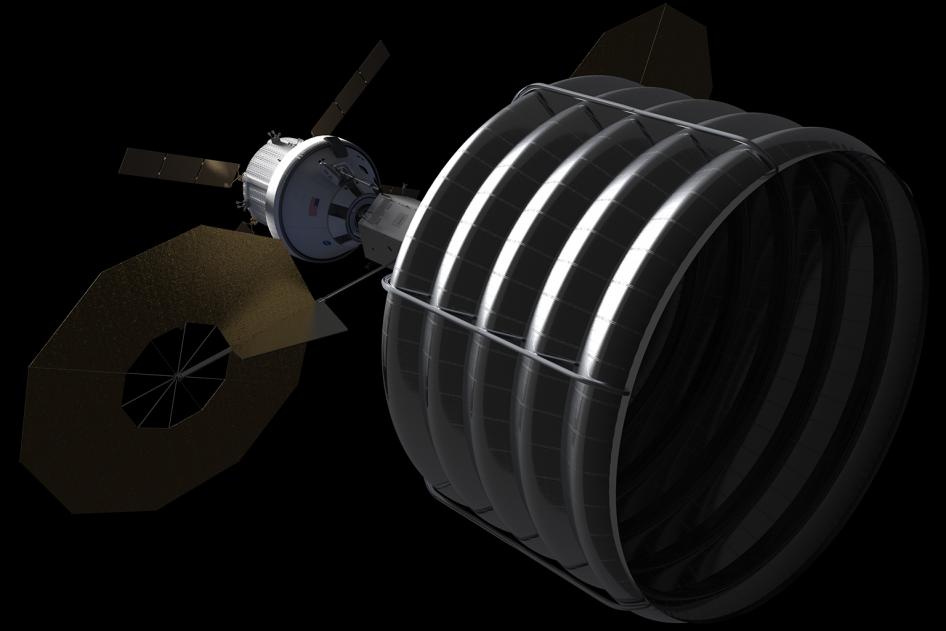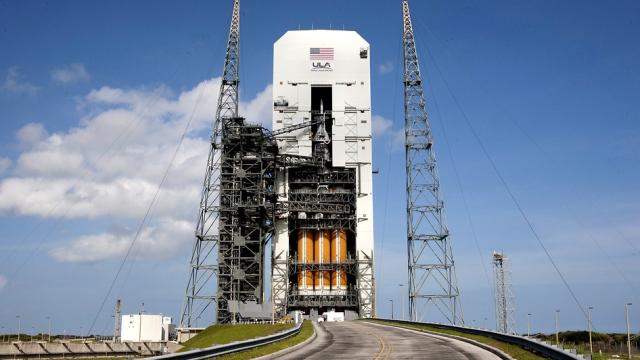NASA’s spacecraft Orion just survived its very first test flight. The shiny, new space capsule will one day carry a human crew to Mars or to an asteroid — wait, which is it? Amidst the hype, there’s still an unforgivable confusion about what comes next.
The launches of new spacecraft are usually occasions for celebration, and my colleague Jesus has nailed what’s so inspiring about Orion. Now comes the hard part: Figuring out where it can take us, and generating the will to make it happen.
Mars, the reboot
NASA hasn’t sent humans past low Earth orbit since the Apollo program in the 70s, and it hasn’t put any humans into space period (relying instead on the Russians) since the Space Shuttle program ended in in 2011. Orion is the answer to that stagnation. Bolstered by a powerful rocket still in development called the Space Launch System (SLS), the spacecraft is designed to escape the gravity of Earth and take humans into deep space. The current plan is to lasso a small asteroid with a robotic ship and put it in orbit around the moon. The SLS and Orion will then take astronauts to visit that asteroid.
NASA hopes that the knowledge gained from the Asteroid Redirect Mission will eventually help them put Orion on Mars — if the agency has the money, which it does not in its current budget, because building giant ships that blast mankind into space is expensive as hell.
If this all sounds convoluted and roundabout and, let’s face it, not remotely as exciting as an actual plan to go to Mars, there’s a very good reason: This plan was salvaged from the original goal, a canceled program meant to land humans on the Red Planet. It’s a consolation prize, and it shows.

Nice infographic. Too bad there’s no money in NASA’s budget for most of this. Credit: NASA
Here’s what happened: In 2004 — before wars in Iraq and Afghanistan totally sapped the US budget — US President Bush asked NASA to develop a new plan for human spaceflight. They came up with Constellation, a program that was supposed to put humans back on the moon by 2020 and on Mars in the years after. Orion would be the spacecraft that took us there.
By 2009, however, a blue-ribbon panel concluded that there was no way NASA would have enough money to get to Mars. The cost of building a rocket alone would leave nothing left over to develop the things the rocket would transport. President Obama responded by cancelling Constellation, so now we have the “Flexible Path to Mars.” That’s why Orion is going to an asteroid first.
Will the backup plan need a backup?
On one hand, salvaging the workable pieces of a canceled plan is admirable. On the other hand, there’s a little enthusiasm for the Asteroid Redirect Mission. Even NASA’s own Advisory Council called it a “dead-end element” for a Mars mission. Mark Sykes, president of the Planetary Science Institute, told Scientific American “It’s a waste of money. It doesn’t advance anything and everything that could benefit from it could be benefited far more by other, cheaper, more efficient means.” He told a congressional committee as much, too. Republicans now in charge of Congress also have every reason to not fund a plan approved by Obama.
NASA still has its work cut out for it with Orion’s mission. First, it needs to identify a suitable asteroid. The asteroid needs to be small, about the size of Orion itself, and solid, not a rapidly spinning collection of loose rubble — no easy feat without sending out a probe. Second, it needs to actually develop and build the robotic spaceship that will tow an asteroid, which should cost at least a couple billion. That’s a lot of effort for a dead-end.

Artist rendition of a spacecraft capturing an asteroid. Image Credit: NASA/Advanced Concepts Lab
And then there’s the problem of morale. A NASA astronaut told the Houston Chronicle about an astronauts-only meeting at the Johnson Space Center in 2013.
Lori Garver, who had advised Obama and then become NASA’s deputy administrator, was visiting Johnson Space Center. After “rah-rah” remarks, Garver polled the roughly four dozen astronauts in attendance where they wanted to go. An asteroid? No hands. Mars? Three hands. The moon? All the rest of the hands.
Of course, flinging a capsule 3,000 miles into to space and having it land safely is still a remarkable feat of engineering. The test flight today is a step forward, but towards what? So many other pieces and so much money still needs to fall into place before we get anywhere — whether that’s Mars or just an asteroid.
The success of Orion’s first test flight was a testament to human ingenuity, an occasion we can and should all be enormously proud of. Proud enough, anyway, to make sure it doesn’t go to waste.
Picture: NASA/Kim Shiflett
